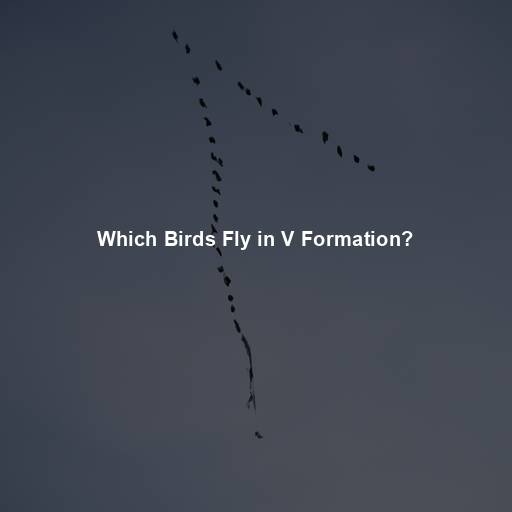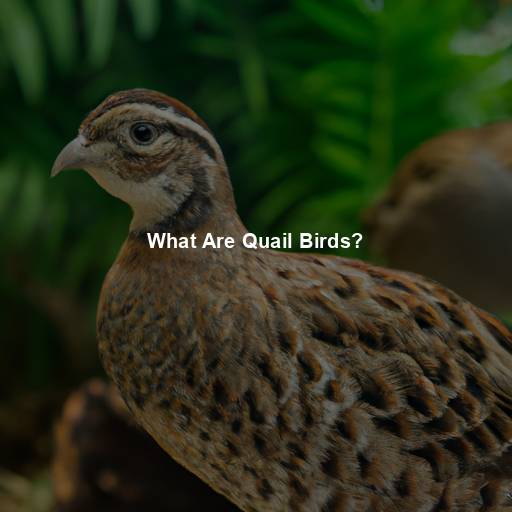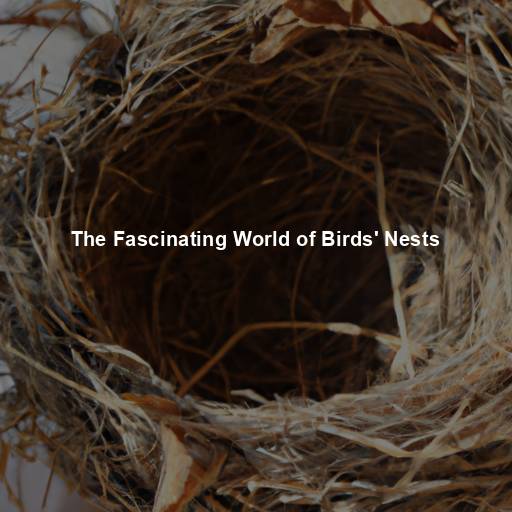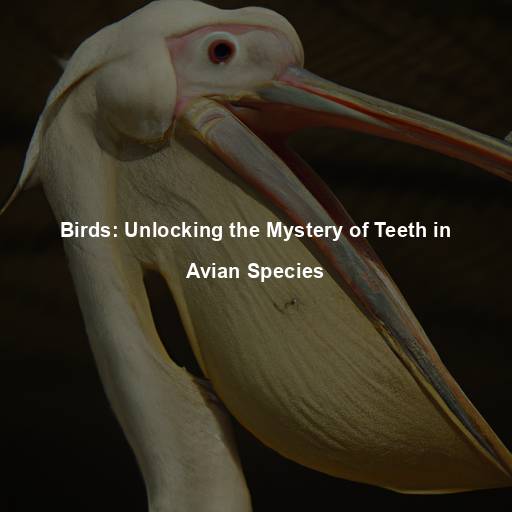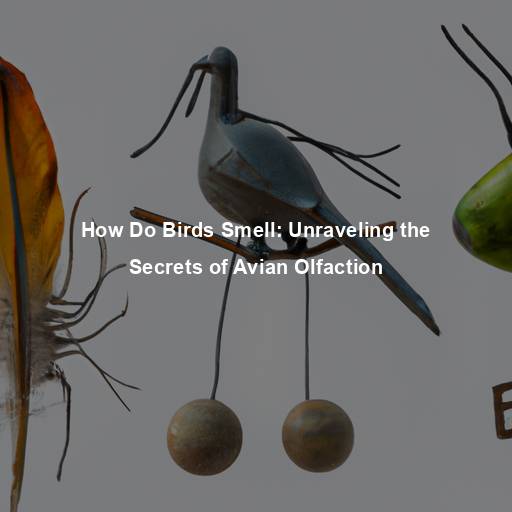Which Birds Fly in V Formation?
Last Updated on October 20, 2023 by Evan
Contents [hide]
- 1
- 2 The Science Behind V Formation Flying
- 3 Birds that Employ V Formation Flying
- 4 Unraveling the Mysteries: Why Do Birds Choose the V Formation?
- 5 A Symphony of Flight: The Beauty of V Formation Flying
- 6 A Spectacle of Nature
- 7 FAQs: Which Birds Fly in V Formation
- 7.1 What is the significance of birds flying in V formation?
- 7.2 Which bird species are commonly known for flying in V formation?
- 7.3 Why do birds fly in a V formation instead of other patterns?
- 7.4 Do all birds within a species fly in V formation during migration?
- 7.5 How do birds determine the order and position in the V formation?
- 7.6 Can birds change their flying formation during flight?
There is no denying the sheer fascination that birds evoke within us. Their effortless flight and seamless navigation through the boundless skies leave us captivated and mystified. However, amidst their bewitching repertoire of behaviors, one particular act dances on the edge of bafflement – the intricate V formation. Scientists and bird aficionados alike have tirelessly pondered over the reasons that propel these feathered wonders to adopt such an enigmatic pattern.
The V Formation: A Sight to Behold
Have you ever found yourself awestruck by the mesmerizing sight of a flock of birds elegantly soaring through the sky? It’s as if time stands still as you watch their coordinated movements and the formation they create, a grand V shape against the backdrop of a bright blue canvas. But what exactly is the reason behind this captivating display? Why do these avian creatures choose to fly in such an organized manner?
The Science Behind V Formation Flying
Aerodynamic Advantages
One of the main reasons birds fly in a V formation is the aerodynamic advantage it provides. As each bird flaps its wings, it creates an upwash of air behind it. The bird flying directly behind can take advantage of this upwash, reducing the amount of energy it needs to expend to stay aloft. This phenomenon is known as “drafting” and is similar to how race car drivers use slipstreaming to increase their speed.
Energy Efficiency
Embarking on lengthy journeys across vast distances can take a toll on our feathered friends, leaving them grappling with an exhausting ordeal during their migrations. Yet, amidst this seemingly arduous feat, birds have discovered a marvelously perplexing solution to conserve their energy and enhance their flight efficiency: the incredible V formation. This enigmatic formation unveils a breathtaking strategy where the valiant avians at the forefront valiantly bear the relentless resistance of the winds, paving an easier path for their comrades nestled behind. As the leader wearily succumbs to the weariness of this relentless battle against the elements, a magnificent rotational dance ensues, allowing another bird to bravely take its place in the lead.
When it comes to the intriguing world of bird migration, there’s an awe-inspiring phenomenon that captures the attention of both scientists and nature enthusiasts alike. Enter the mesmerizing V formation flight, a spectacle that not only mesmerizes but also serves a practical purpose. As the avian squadron takes flight, a brave leader takes the reins, mapping out the path and guiding the rest of the feathered companions on their journey. This unique formation not only ensures a smooth course but also establishes a channel of communication amongst the comrades.
Birds that Employ V Formation Flying
Now that we understand the benefits of V formation flying, let’s explore some of the bird species that exhibit this behavior.
Canada Geese
Few birds are as iconic as Canada Geese, with their impressive V formations gracing the skies. These magnificent waterfowl embark on arduous migratory voyages, spanning vast distances. By cleverly adopting the V shape, they not only conserve precious energy but also foster a sense of unity within their flock. As they soar overhead, one can’t help but be captivated by their symphony of honks, further enhancing the awe-inspiring sight.
Sandhill Cranes
Sandhill Cranes are elegant birds known for their graceful flight and distinctive bugling calls. They are skilled long-distance migrants and are often observed flying in V formation. Like other birds that employ this flight pattern, Sandhill Cranes benefit from the aerodynamic advantages and energy savings provided by the V formation.
Swans
When it comes to winged wonders, the Trumpeter Swans take the crown for their awe-inspiring flight formations. Picture this: a symphony in the sky as these magnificent creatures glide through the air in a perfectly synchronized V shape. It’s not just about travel efficiency, though. These feathered aviators also use this majestic display to connect with their kin and foster their tight-knit community.
Pelicans
Pelicans may not be the first bird that comes to mind when thinking about V formation flying, but they do exhibit this behavior. These seabirds often fly in staggered V formations, with each bird slightly offset from the one in front. This arrangement allows them to take advantage of the upwash created by the bird ahead, making their long flights more energy-efficient.
Snow Geese
There is a certain magic in the graceful flight of Snow Geese, and their migratory journeys are no exception. Just like their cousins, the Canada Geese, these birds have honed their skills in long-distance travel. But here’s where the plot thickens: these magnificent creatures take communal living to a whole new level. Picture this: thousands upon thousands of Snow Geese, uniting in a harmonious dance as they glide through the sky in perfect V formations.
White Storks
White Storks are known for their impressive annual migrations, covering thousands of miles between their breeding and wintering grounds. These large birds utilize thermals and updrafts to soar effortlessly through the air. When flying in a V formation, they capitalize on the air currents generated by the leader’s wingbeats, allowing them to conserve energy during their arduous journeys.
Ibises
Ibises, with their slender bodies and distinctive curved bills, are another group of birds that engage in V formation flying. These long-legged waders are often spotted flying in organized lines, with each bird maintaining a precise position relative to its neighbors. This coordinated flight pattern enhances their aerodynamic efficiency and facilitates communication within the flock.
White Pelicans
White Pelicans, different from their Brown Pelican counterparts, are renowned for their impressive wingspan and elegant flight. During migration, they form loose V formations, with individuals maintaining a reasonable distance from each other. This spacing allows them to maintain visual contact and make quick adjustments to their flight path if necessary.
Unraveling the Mysteries: Why Do Birds Choose the V Formation?
While the aerodynamic advantages and energy efficiency associated with V formation flying are evident, scientists continue to explore the specific reasons why birds choose this flight pattern. Several theories have been proposed, each contributing to our understanding of this fascinating phenomenon.
Enhanced Visual Communication
Birds flying in a V formation have an unobstructed view of their flockmates, allowing for visual communication. This visual contact enables them to monitor the movements and behavior of their companions, facilitating coordinated flight and reducing the risk of collisions. By staying connected visually, birds can quickly respond to changes in direction or potential threats, ensuring the safety and cohesion of the flock.
Social Bonding and Leadership
In the avian realm, there is a captivating phenomenon that not only defies the laws of gravity but also intertwines with the intricate dynamics of social relations. Behold the mesmerizing V formation, where winged creatures unite in a synchronized display of teamwork and camaraderie. As this majestic assembly soars through the heavens, the shifting of leadership roles becomes a captivating dance of power, solidifying bonds and affirming individual contributions to the collective success that pervades the spirited flock.
The incredible journey of migratory birds continues to baffle scientists as they navigate through vast distances with an apparent ease that leaves us in awe. Their uncanny ability to read the stars, utilize familiar landmarks, and tap into the Earth’s magnetic field is a marvel of nature’s design. However, recent studies suggest that flying in a V formation may be more than just a spectacle; it could be a strategic move to amplify their navigation skills. By positioning themselves in this distinctive pattern, these intuitive aviators create a stable and reliable reference point, allowing the leader to chart the course while others effortlessly follow suit, ensuring the flock’s perplexing path towards their desired destination.
Predation Avoidance
Flying in a V formation may also serve as a defense mechanism against predators. The collective movement and synchronization within the formation can confuse and deter potential threats. Additionally, the increased vigilance and alertness of multiple birds scanning the surroundings enhance the overall safety of the flock.
A Symphony of Flight: The Beauty of V Formation Flying
Witnessing the captivating spectacle of birds gracefully soaring in a majestic V formation is an awe-inspiring experience that goes beyond mere visual delight. It serves as a vivid reminder of the extraordinary adaptability and survival strategies that birds have developed to not only endure but flourish in the diverse ecosystems they inhabit. The intricately coordinated flight pattern, the astounding energy conservation, and the heightened communication among these flying marvels unveil the bewildering intricacies of avian social dynamics and the mesmerizing marvels of the natural world.
As we delve deeper into the enigmatic realm of bird behavior, the captivating allure of V formation flying keeps us spellbound. Each revelation, investigation, and breakthrough leaves us more enthralled by the intricate details underlying this mesmerizing spectacle. So, next time you catch sight of birds gracefully maneuvering in a V-shaped pattern across the boundless sky, pause for a moment and bask in the sheer magnificence, as nature’s secrets unfold in ways that continue to mystify even the most astute of minds. Unlocking the Enigma: Decoding the Majestic V Formation
The Evolutionary Advantage
The mesmerizing sight of birds flying in a perfect V formation is far from being a haphazard phenomenon. It is a fascinating testament to the remarkable adaptation and cunning strategy developed by these winged creatures over countless generations. By embracing this synchronized flight pattern, birds can reap a multitude of benefits, ranging from conserving precious energy reserves to enhancing their communication skills, all while increasing their odds of survival in a perplexing world. So, let us embark on a journey to unravel the enigmatic intricacies of V formation flying and discover the captivating secrets hidden within those symmetrical arcs in the sky.
Energy Conservation
Have you ever gazed up at the sky and marveled at the graceful flight of migratory birds? It turns out that there’s more to their aerial acrobatics than meets the eye. These magnificent creatures have a secret weapon for conserving energy during their epic journeys: the power of teamwork. By forming a V-shaped formation in the sky, birds cleverly capitalize on the upwash of air, creating a helping hand for their fellow feathered friends.
The awe-inspiring dance of migratory birds never ceases to captivate our imagination, as they embark on impossible journeys across vast distances. With instincts as ancient as time itself, these winged wanderers are equipped with a curious blend of innate knowledge and carefully acquired navigational skills. Guided by an invisible compass, they form an enigmatic V formation, wherein each bird strategically positions itself, like a piece of an intricate puzzle. A mesmerizing spectacle to behold, it is this collective coordination and unwavering focus that grants them the power to overcome adversity and conquer the unknown, no matter the whims of the elements or the mysteries of unfamiliar lands.
Improved Communication
In the vast realm of nature, communication reigns supreme, even amongst our avian companions. Take, for example, the captivating phenomenon of V formation flying, where the enigmatic choreography of birds unfolds. Within this symphony of flight, a special bond emerges, weaving together the very fabric of their social existence. Through a mesmerizing exchange of visual cues and harmonious melodies, these winged beings communicate with utmost precision, heightening their collective awareness and safeguarding their communal journey.
Increased Field of Vision
One cannot help but marvel at the manifold benefits of V formation flying. Among them, a striking advantage emerges: the widened panorama that befalls each winged comrade in the formation. As they gracefully position themselves to the side and with a gentle slant behind their leading feathered counterpart, a breathtaking expanse of their surroundings unfolds before their beady yet perceptive eyes. This newfound visual acuity serves as an invaluable defense mechanism against lurking predators, an efficient tool for spotting bountiful sustenance, and a vital means to perpetuate awareness of their fellow flock-mates.
Social Cohesion
Flying in a V formation fosters social bonding among flock members. The synchronized movement and shared experience create a sense of unity and cooperation within the group. Each bird has a role to play, taking turns as the leader and contributing to the collective success of the flock. This social cohesion not only benefits the birds during migration but also extends to other aspects of their lives, such as breeding and foraging.
Adaptability and Flexibility
Witnessing the awe-inspiring phenomenon of V formation flying among birds never fails to captivate our sense of wonder. However, it is a delightful mind-boggler that this remarkable dance in the sky is not a rigid routine. Rather, birds possess an astonishing ability to tailor their flight formations to suit the shifting whims of nature. Wind conditions, the size of the flock, and even the individual prowess of each bird influence this perplexing ballet.
Species-Specific Differences
It’s important to note that not all bird species engage in V formation flying. The behavior varies among different groups, and some species have evolved alternative flight patterns that suit their specific needs. For example, large raptors, such as hawks and eagles, often soar individually or in loose groups, utilizing thermals and updrafts to stay aloft. Waterfowl, on the other hand, are more likely to adopt V formation flying due to their migratory nature and the need to cover vast distances.
Unanswered Questions
While much research has been dedicated to understanding V formation flying, there are still unanswered questions that continue to intrigue scientists. The exact mechanisms by which birds communicate and coordinate their movements within the formation, the role of individual leadership, and the impact of varying flock dynamics on flight efficiency are areas of ongoing investigation. By unraveling these mysteries, scientists hope to gain deeper insights into avian behavior and inspire innovative applications in fields such as aviation and robotics.
A Spectacle of Nature
V formation flying is an awe-inspiring spectacle that showcases the remarkable capabilities of birds and the intricacies of their social interactions. It is a testament to the power of adaptation and collective intelligence. The next time you witness a flock of birds soaring through the sky in perfect harmony, take a moment to appreciate the beauty and marvel at the wonders of nature. The V formation flying is a testament to the incredible feats that can be achieved through unity, communication, and the pursuit of shared goals.
FAQs: Which Birds Fly in V Formation
What is the significance of birds flying in V formation?
Have you ever wondered why birds fly in those mysterious V-shaped formations? Well, prepare to have your mind blown! These avian acrobats have a trick up their wings – by flying in this captivating formation, they actually decrease the resistance they face, making their journey more energy-efficient. But that’s not all! This synchronized spectacle also promotes seamless communication and coordination among the flock, ensuring they stay in sync during their awe-inspiring flights. So next time you spot this enigmatic display in the sky, take a moment to appreciate the sheer brilliance of mother nature’s aerial choreography.
Which bird species are commonly known for flying in V formation?
When it comes to the aerial acrobatics of our feathered friends, there is one particular formation that has captivated both scientists and bird enthusiasts alike: the majestic V-shaped flight. Among the participants in this avian spectacle are the renowned Canada Goose, renowned for their long-distance migratory adventures. These magnificent waterfowl join a prestigious ensemble that includes regal swans, graceful pelicans, nimble ducks, elegant cranes, and even some species of storks and ibises. While not all birds partake in this peculiar choreography, it is an enchanting display commonly witnessed among migratory birds and those with an affinity for the water.
Why do birds fly in a V formation instead of other patterns?
Have you ever wondered why birds always seem to fly in that distinctive V-shaped formation? It turns out that there’s a fascinating reason behind this avian phenomenon. Through centuries of evolution, birds have adapted to take advantage of the aerodynamic benefits provided by the V formation. By flying in this unique pattern, each bird can harness the upwash created by its fellow fliers, which actually helps to minimize drag and conserve precious energy. Not only does this allow for more efficient long-distance flights, but it also facilitates seamless communication and visual contact among the birds, ensuring that their journey is a harmonious and coordinated one. So the next time you see a flock of birds soaring through the sky in their elegant V-shaped formation, you can marvel at the sheer genius and adaptability of these magnificent creatures.
Do all birds within a species fly in V formation during migration?
Not all birds within a species necessarily fly in V formation during migration. The decision to adopt a V formation largely depends on the specific behavioral and physiological characteristics of the bird species in question. For instance, larger birds like geese and cranes tend to form V-shaped patterns more frequently due to their size and long-distance migratory habits. However, smaller birds, such as songbirds, often migrate individually or in loose flocks without a specific formation.
How do birds determine the order and position in the V formation?
In the avian world, the V formation is not a whimsical arrangement, but a carefully orchestrated display of order and coordination. Factors such as social structure and pecking order come into play to determine the birds’ positions. At the forefront, the lead bird assumes the role of the seasoned expert, guiding the way for the rest of the flock. Meanwhile, the other birds position themselves with calculated finesse, slightly trailing behind and to the sides of the leader. Interestingly, the precise decision-making mechanisms employed by these feathered creatures remain shrouded in perplexity, as they seem to vary across different bird species.
Can birds change their flying formation during flight?
In the vast open skies, a mesmerizing spectacle unfolds as birds gracefully navigate the winds. It seems these feathered marvels possess an enigmatic ability to alter their flying formation as if in a seamless dance of perplexing harmony. When weariness settles upon the leader, a mesmerizing shift occurs, as if a delicate baton is passed, enabling another skilled avian to soar into the forefront. In this intricate aerial ballet, the vigilant birds adapt their positions, responding to the whims of the wind or providing respite to those who bear the weight of fatigue. These ethereal adjustments, veiled in the secrets of the avian realm, preserve a sublime aerodynamic shape and preserve the precious energy and coordination of the group, as they venture forth in their wondrous journey through the boundless sky.

